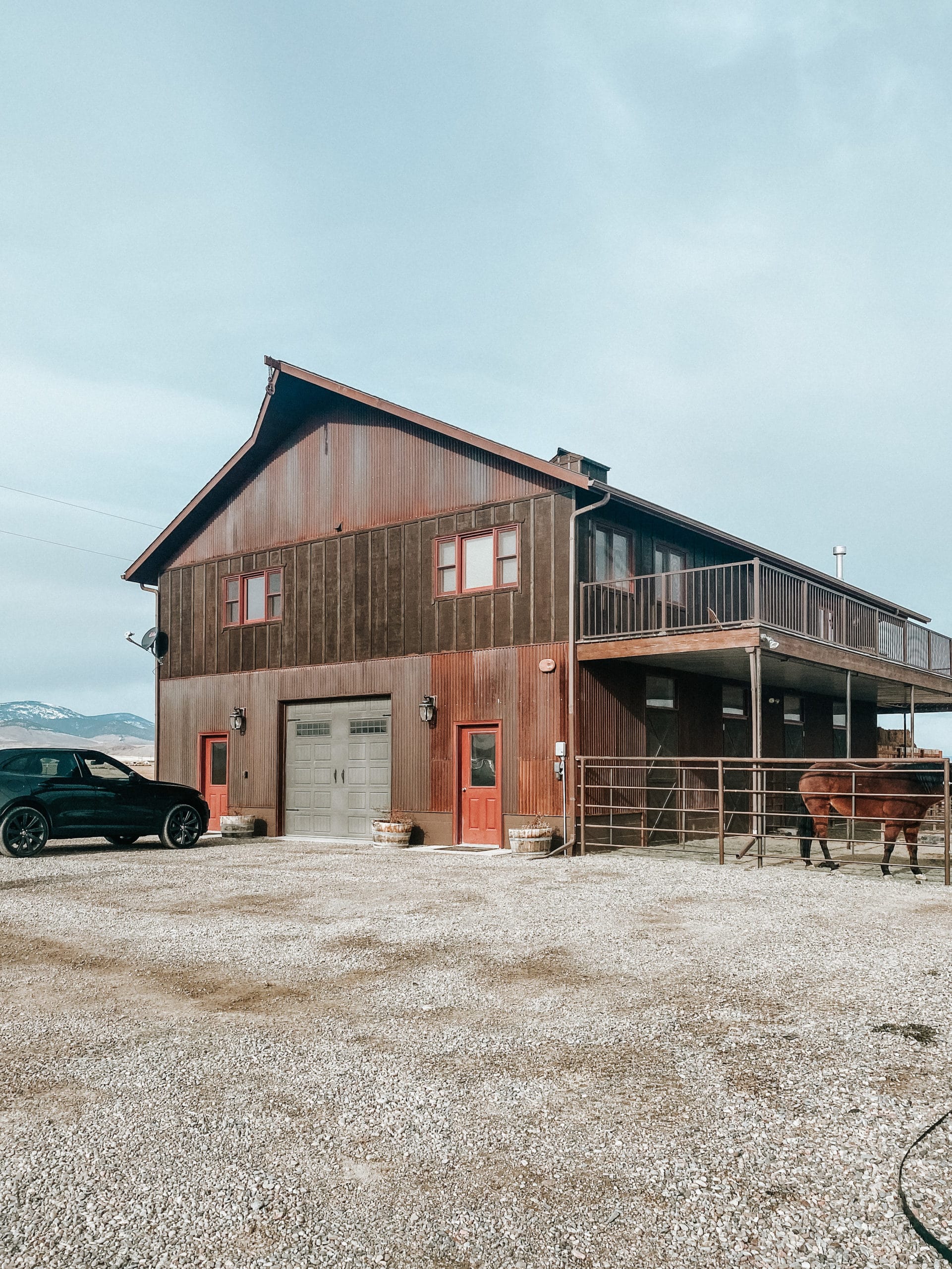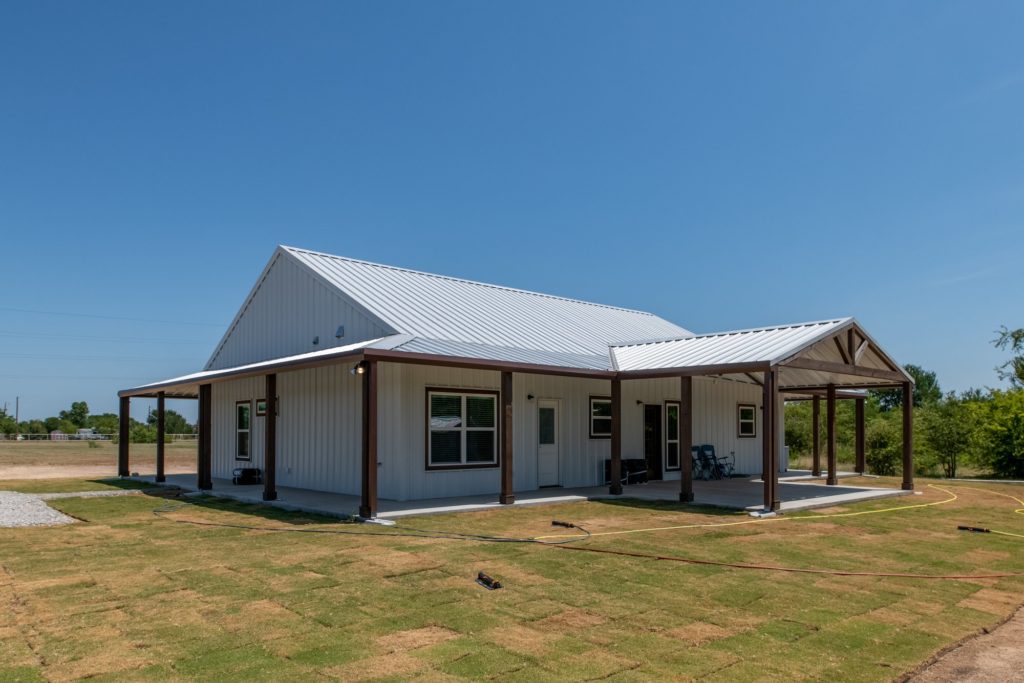Trusted Barndominium Builder: Custom Builds Tailored to Your Demands
Trusted Barndominium Builder: Custom Builds Tailored to Your Demands
Blog Article
Barndominiums Vs. Conventional Homes: a Thorough Comparison of Lifestyle and Performance
The choice in between barndominiums and conventional homes incorporates numerous elements, including lifestyle choices and functional requirements. Barndominiums are defined by their open layouts and adaptability, usually appealing to those that prioritize common living and flexibility.
Review of Barndominiums
Barndominiums, a novel real estate trend acquiring popularity throughout various areas, blend the rustic beauty of barn-style design with the capability of modern living rooms. These unique frameworks generally consist of a steel or wood framework, integrating open flooring strategies and high ceilings with energy-efficient attributes. Frequently located on expansive rural residential properties, barndominiums provide property owners the opportunity to appreciate a peaceful way of life while giving sufficient area for various activities.
The flexibility of barndominiums prolongs past their visual charm; they can work as both living quarters and practical rooms for pastimes, workshops, or perhaps small companies. Their flexible layout permits for very easy personalization, accommodating varied family requirements and choices. Many owners value the low maintenance requirements connected with steel exterior siding and roof, adding to long-term longevity.

Characteristics of Traditional Homes
Stressing ageless layout and comfort, conventional homes are characterized by their distinct building styles, which typically mirror historical impacts and regional visual appeals. Common features include in proportion exteriors, gabled roofs, and an emphasis on workmanship, leading to a warm and inviting environment.
Typical homes typically include components such as crown molding, wainscoting, and hardwood flooring, enhancing their timeless appeal. They commonly include multiple areas with defined functions, advertising family communication while allowing for privacy. view now. The layout typically consists of formal living and dining locations, which are conducive to amusing visitors and organizing family events
Outside products such as brick, wood, or rock are regularly made use of, adding to toughness and a sense of durability. Barndominium builder. In addition, lots of traditional homes are designed with front porches or stoops, fostering a feeling of neighborhood and link with the community
Landscape design plays a substantial duty in typical home design, with well-kept gardens and pathways that improve visual appeal - visit site. Overall, typical homes embody a sense of nostalgia and security, interesting those who value heritage and a more organized living atmosphere
Cost Comparison
Typically, an expense contrast in between barndominiums and conventional homes discloses significant differences in building and construction expenditures and general financial investment. Barndominiums, often constructed from metal or steel frames, commonly incur reduced product and labor prices than traditional homes built from timber and brick. The streamlined layout of barndominiums can translate to decreased building times, even more lowering labor prices and expediting tenancy.
Usually, the price per square foot for a barndominium varies from $100 to $150, while conventional homes can vary commonly, generally dropping between $150 and $300 per square foot, depending on location, materials, and layout complexity. This expense difference makes barndominiums an attractive choice for budget-conscious purchasers seeking larger living areas without sacrificing high quality.
Additionally, barndominiums may result in lasting cost savings through lower maintenance prices, power effectiveness, and insurance rates. Their durable building materials often need much less maintenance gradually contrasted to typical homes. However, it is vital to consider that while preliminary expenses may be reduced for barndominiums, the last financial investment will certainly additionally rely on specific customization and preferred amenities, which can affect the overall expenditure in both real estate types.
Way Of Life and Space Considerations
When thinking about lifestyle and area, barndominiums provide a special adaptability that attract a range of home owners. These hybrid structures combine domestic living with useful space, often including open flooring strategies that can be adapted to fit private demands. This adaptability is especially useful for family members or people seeking an individualized living setting, enabling diverse usages such as office, workshops, or recreational areas.

Additionally, the visual appeal of barndominiums can satisfy both rustic and modern preferences, making them a functional option for various style preferences (Barndominium repair). Eventually, the choice between a barndominium and a conventional home usually rests on just how well each alternative straightens with the homeowner's way of life ambitions and spatial needs, highlighting the importance of thinking about personal concerns in the decision-making procedure
Environmental Influence and Sustainability
The environmental effect and sustainability of barndominiums existing compelling advantages contrasted to traditional homes. Mainly constructed from steel and other durable products, barndominiums are usually built utilizing recycled sources, lowering the need for brand-new products and minimizing waste. Their design generally stresses their website open areas, which can cause reduced energy consumption for home heating and air conditioning compared to conventional homes with even more segmented designs.
Additionally, barndominiums can integrate lasting features such as photovoltaic panels, rain harvesting systems, and progressed insulation methods, improving their energy efficiency. The convenience of their design allows property owners to incorporate these technologies much more seamlessly than in numerous traditional homes, which might call for substantial retrofitting.
Additionally, barndominiums typically need less resources for building due to their less complex, much more efficient styles. This not only lowers the carbon impact related to building however additionally contributes to an extra lasting way of living. In comparison, standard homes might entail greater levels of energy expense and resource use throughout their lifecycle, from building and construction to maintenance. In general, barndominiums stand for a forward-thinking approach to sustainable living, straightening with modern environmental concerns.
Verdict
In recap, the selection between barndominiums and typical homes hinges on individual way of life preferences and practical demands. Barndominiums, with their open designs and lasting products, cater to those looking for versatility and common living.
Report this page